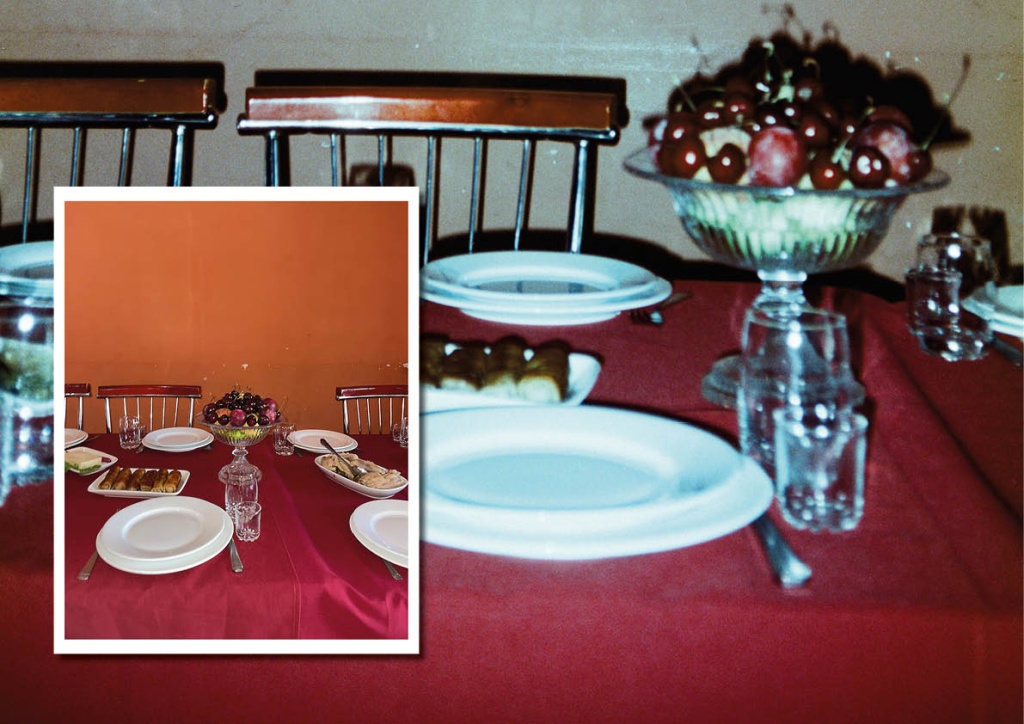Last year in Stepanakert: A photo essay4 min read
Azerbaijan’s latest attack on Nagorno-Karabakh in September 2023 forced over a hundred thousand Armenians out of their homes, and led to the capitulation and dissolution of their unrecognised institutions. Photographer Anastasia Karkotska visited the capital, Stepanakert, a little over a year before it would become a ghost town with Azerbaijani flags.

Trained as a historian with a particular interest in the ongoing collapse of the Soviet Union, I decided to go to Nagorno-Karabakh in the summer of 2022. As a Russian citizen, I had to obtain a de facto visa from the Nagorno-Karabakh embassy in Yerevan. The required document – a simple sheet of paper, containing my name and passport number – explicitly listed the conditions of my journey. I was permitted to visit Stepanakert, Martakert, Martuni, and Askeran from 1 to 4 July. One sentence, however, stood out and indicated the possible fragility of the status quo: my right to move was affirmed “with the exception of the front line.”

On my way out of the Karabakh representation in the Armenian capital, an embassy worker reminded me that the peacekeepers should not be photographed – “you will pass them and you will be free.” I forgot to ask any questions about the checkpoints.
The only way to reach Stepanakert from Armenia leads through the Lachin corridor, a mountainous road connecting the south-eastern tip of Armenia around Goris with the territory of Nagorno-Karabakh. Otherwise surrounded by Azerbaijani territory, the Lachin corridor was a lifeline for the Armenian population, providing for stocked supermarkets and pharmaceutical goods in Nagorno-Karabakh.

When I approached the Armenian checkpoint, little did I know that four months later this lifeline would be sealed off by Azerbaijan, leading to scarcity and deprivation on the other side of the road. At the entrance to the Lachin corridor stood a small tent. The soldier at the Armenian checkpoint skimmed my documents, wished me a good trip, and waved me through.

After passing the Armenian checkpoint, I approached a checkpoint with Russian peacekeepers, which have guarded the Lachin corridor since the end of the second Nagorno-Karabakh war in November 2020. One of the peacekeepers held a Kalashnikov and opened the door of the minibus to inspect its interior and to take a look at the passengers. After asking each passenger about the purpose of their visit, we were let through. Overall, there would be five or six such checkpoints on our way.

In Stepanakert, the owner of our rented apartment met me in the city centre and asked why I was scared. According to him, there was no reason for fear because the Russian peacekeepers “are protecting us.” At the same time, all checkpoints were lavishly decorated not only with Russian flags but also with posters stating that “there is such a profession as defending the Motherland.” The posters gave the impression that the peacekeepers had to be convinced that their presence on foreign territory was worthwhile.

After the long journey, we were immediately invited to drink coffee at the owner’s restaurant. Preparations for a banquet were underway, while he told stories about the tourists from different countries who had visited in the past and his experience of being shell-shocked during the war.
Other cafes were filled with people, children were running around the streets and courtyards, and warm blankets and mattresses were thrown on balconies. I noticed stickers everywhere with a brief inscription in Russian: “Artsakh is alive.” The city truly lived its normal life, with the exception that military uniforms were among the clothes drying on the lines.
But in September, the warm summer days would end prematurely. First came the clashes on the border and the shelling of Armenian territory, then came the blockade – which would effectively last from December 2022 until the attacks of September 2023.

Following Azerbaijan’s twenty-four-hour offensive on 19–20 September, citizens of Stepanakert began to remove the photographs of their fallen relatives from the memorial board on Renaissance Square, to prevent them from being desecrated by the approaching troops. On 28 September 2023, the President of the self-proclaimed Nagorno-Karabakh Republic, Samvel Shahramanyan, issued a decree dissolving all government institutions from 1 January 2024.

Anastasia Karkotska thanks Alyosha Rogozhin for supporting her on her journey to Nagorno-Karabakh and Alexander Kosykh for his help in selecting and preparing photographs for publication.
A different version of this article was originally published in Armenian on 29 September 2023 by Epress.am.




